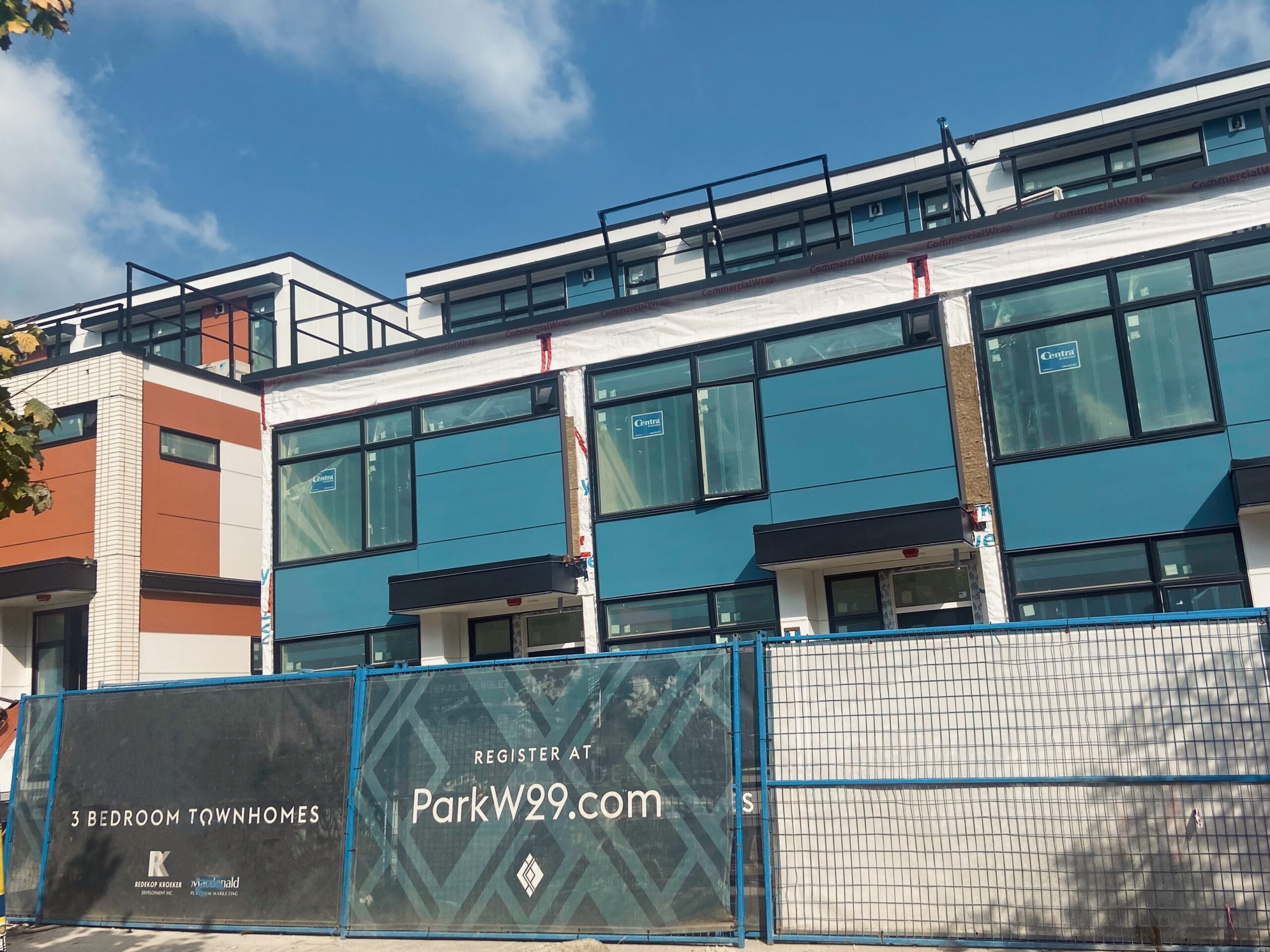THE PRESALE MARKET
The Presale Outlook From 50,000 Feet
By Matthew Lee, Personal Real Estate Corporation

We find ourselves in unchartered real estate territory. For the first time in history, Vancouver and the Lower Mainland market conditions have created an arena where tenants, buyers and sellers are collectively finding it difficult to rent, own, and purchase – all at the same time. And things are likely going to stagnate before we see another robust cycle of real estate activity.

Park W29 Construction Site Photo in Vancouver, Canada, September 22, 2022
A Knife’s Edge: Too Much or Too Little?
Prior to COVID, Lower Mainland real estate developers were already pushing the pause button on land acquisitions and development applications. Reports by Zonda Urban suggested that approximately 7,000 would-be presale units were removed from the open market as demand appeared balanced. This equated to about one third of all presale typically offered for sale annually from Squamish to Chilliwack. Low interest rates fueled salacious real estate appetites across the Lower Mainland during COVID and suddenly, we found ourselves in supply compression. Municipalities struggled with the tidal wave of development and rezoning applications across the board; which, in turn, have placed historical and unprecedented pressures on construction labor, materials, and inevitably supply chains.
Fast forward 24 months, the development community yet again – is taking a collective pause on multi-family entitlements for both market rental and marketing housing projects respectively. Municipal and bureaucratic “red tape” have made developments cost-prohibitive, putting profits at risk, and these risks no longer outweigh the benefits. Land residual values remain (and will remain) high due to the fundamental shortage of developable land, which is further inflamed by clawbacks and restrictions on density, floor space ratio (FSR) and building heights. Developers cannot (and certainly will not) pay over-market pricing for land with escalating construction costs and profit uncertainty. Meanwhile, those owners holding desirable land, feel zero motivation nor urgency to accept lower prices. The market is between a rock and a hard place and there are no quick fixes.
What Does This Mean for the Next 18 Months?
The full effects of this development hiatus will undoubtedly be noticed in the next 24-36 months when our municipal populations are projected to explode due to pent-up immigration. While we are months away from knowing the statistical figures on delayed developments, the lack of available housing will inevitably push rental rates and prices higher.
With a projected 625,000 people immigrating to British Columbia over the next 5 years, the bigger questions are: 1) How will we house these people and families And 2) what effect will this have on pricing? Adding to this compounding effect, the construction industry will be running in overdrive as the tail-end of the Baby Boomer Generation is expected to be retiring within the next 6-8 years. Aside from housing, what impact will this have on our transportation and riddled healthcare system?
The short answer is anyone’s guess, but we are not anticipating price erosion. There are a myriad of reasons why people want to live in our Province and specifically the Lower Mainland. Desirable communities, job opportunities, and access to transportation – just to name a few. Housing types like row homes, townhouses, and duplexes have long been considered “the new single family home” with yards, balconies, decks and flex space. These types of homes will continue to be in demand, highly coveted, and desirable in virtually every neighborhood community moving forward. The rising cost of land will continue to keep average living spaces compact and efficient, in a continued effort to make the finished product both sellable and affordable.
Most of the larger commercial lenders reached their lending targets this past summer, meaning (outside of private loans) there is a shortage of available capital for land acquisitions. Municipal development applications have slowed too, and while the price of lumber has fallen, developers are not clambering to dig holes and pour concrete. Like buyers in this market, developers are taking a “wait and see approach” too. Looking ahead for the next 12-18 months we will see interest rates stabilize. Rentals will continue to be in high demand largely fueled by gradual population growth and when interest rates eventually decrease, be prepared for the market to go for yet another run. It simply comes down to supply and demand, and (today) demand is driving the bus.
